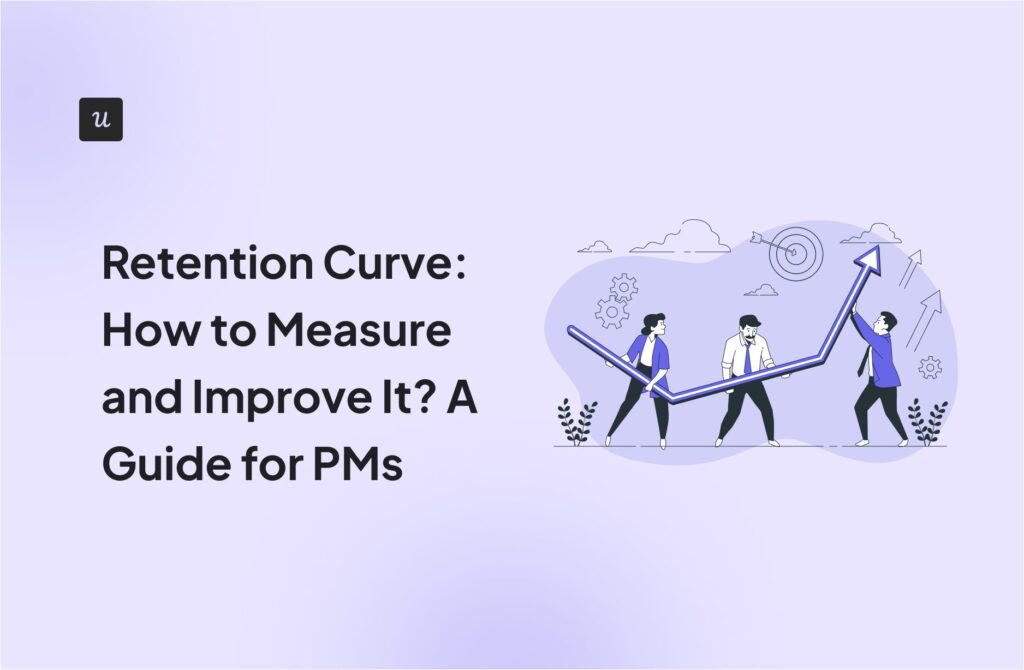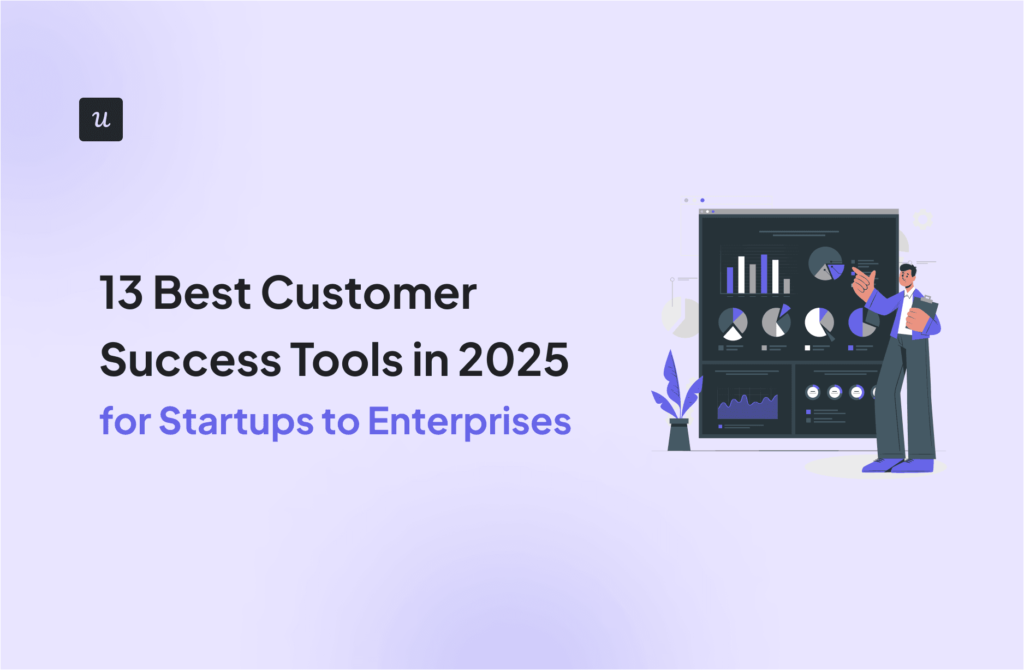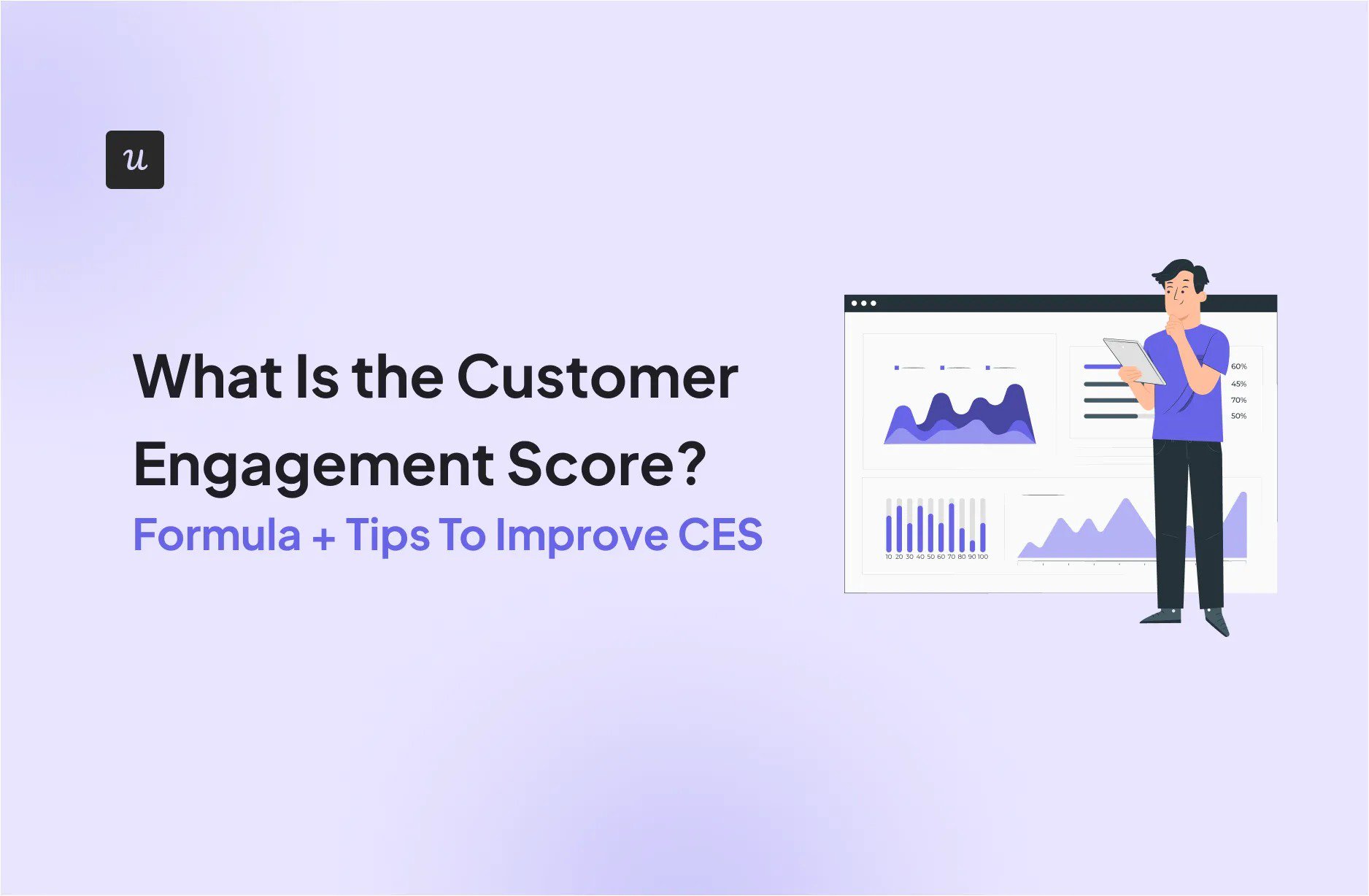
What Is the Customer Engagement Score? Formula + Tips to Improve CES
Customer engagement has a direct correlation with loyalty. Users who consistently engage with your product find value in it and will likely stick around. In fact, 48% of consumers made a repeat purchase in response to personalized engagement.
And that’s why, as a product manager, it’s important to build an engaged user base. This is where the customer engagement score (CES) comes into the picture. It measures how engaged existing customers and free trial users are with your product.
Using this metric, you can also find out points of low or high engagement and accordingly make feature or product decisions to minimize customer churn and drive account expansion.
But how do you monitor and measure the customer engagement score? Let’s discuss that (and more!) below.
Try Userpilot Now
See Why 1,000+ Teams Choose Userpilot

Why is the customer engagement score important?
Tracking CES offers both reactive and proactive benefits for customer retention and satisfaction.
Reactively, CES helps you:
- Reduce churn: Disengaged customers, i.e., the ones with a low CES, might be on the brink of churning. Identifying these users early on and reaching out to them to fix their problems will help you address potential churn risks and minimize revenue loss. You can combine CES with other parameters like company size and industry to create a segment of high-value customers who might churn and implement tailored strategies to re-engage them.
- Improve customer support: Engaged customers are more likely to interact with support agents and offer inputs on product issues and areas of improvement. Making product changes based on these insights and monitoring the CES can help you understand if the modifications lead to greater engagement. Likewise, their feedback could be instrumental in improving your customer support.
Proactively, CES allows you to:
- Increase customer lifetime value (CLTV): You can identify users with the potential to sign up for a paid subscription or purchase add-ons (the ones with a higher CES). Implementing targeted marketing campaigns will help you retain them for longer.
- Improved product development: Encouraging engaged customers to participate in polls and surveys offers an in-depth look at their expectations and pain points. Since they’ve actively used your product, they’re likely to provide more relevant feedback. Use these insights to inform product development and innovation.
- Enhanced brand advocacy: You can ask your most engaged customers to review your product on third-party platforms. These users find your product valuable, so they’ll likely have good things to say. A great way to motivate them would be to introduce customized referral programs that encourage them to bring new customers to your business.
For example, you can track CES to identify at-risk free trial prospects. Implementing personalized onboarding flows can help prevent these users from churning and even nudge them to an activation event like scheduling their first campaign.
Kontentino used this strategy to their advantage by creating personalized interactive walkthroughs with Userpilot. When a new user signs up, a modal asks a set of questions that enables Kontentino to segment them and personalize their onboarding experience. The result? This approach improved their new user activation by 10%.
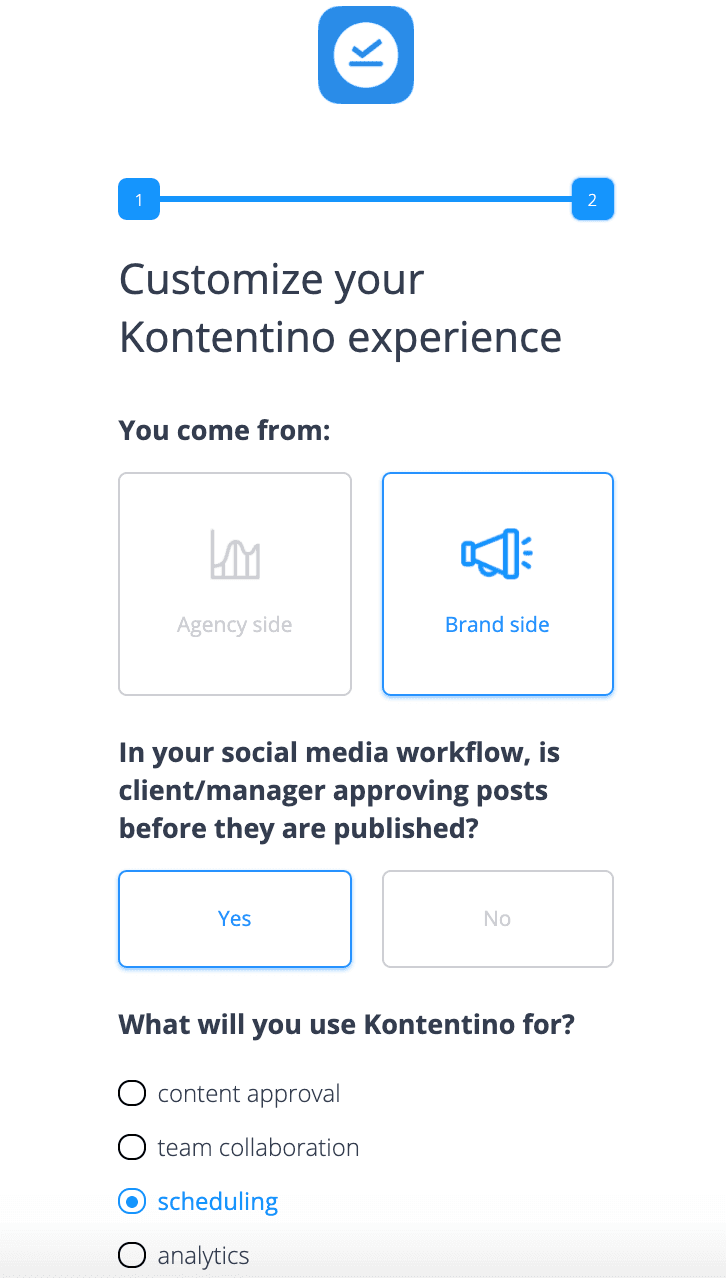
Similarly, you can create a segment of engaged customers and collect their feedback with targeted surveys. Analyzing these survey responses might reveal that they need more third-party integrations to make the most of your platform.
How do you calculate the customer engagement score?
Calculating CES isn’t as straightforward as measuring other key customer engagement metrics, such as churn rate or NPS. That’s because the definition of engagement can vary from one product to another.
User engagement for a daily-use project management platform will look different from that for an invoicing tool used at the end of every month. It’s up to you to identify the factors that influence engagement in your specific SaaS product.
That said, you can use these steps to calculate CES for any SaaS product:
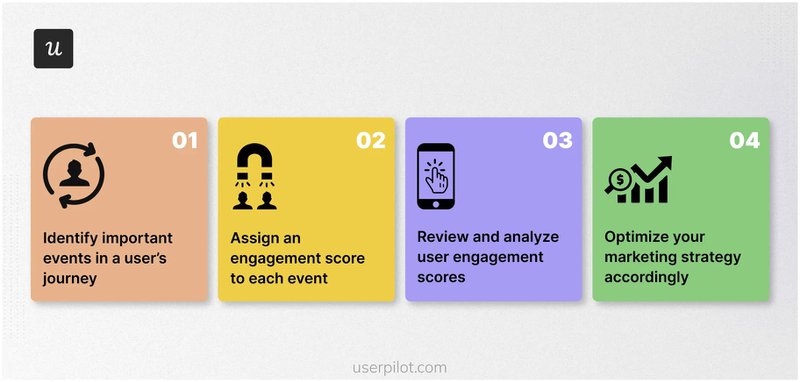
Step 1: Define engagement events
Identify the specific user actions and behaviors that signify meaningful engagement for your product.
Before picking out engagement events, make sure you have a solid grasp of the user journey. This way, you can create a list of all the relevant events that must be tracked.
Depending on your product’s type and target customers, you can choose from the following engagement events:
- Product usage frequency: Logins, session duration, and feature usage.
- Key actions: Completing core tasks, achieving milestones, and using key product features.
- Revenue-related actions: Subscription upgrades, add-on purchases, and referrals.
- Customer interactions: Submitting support tickets, providing feedback, and joining community forums.
Step 2: Track engagement events
You’ll need to monitor events at every step of the customer journey for a complete picture of user engagement. User needs and experiences change at each stage of the journey, and tracking their engagement helps you understand how to improve them at each touchpoint.
When customers have an exceptional end-to-end experience with your product, they’re more likely to engage with it long-term, resulting in increased customer lifetime value (CLTV).
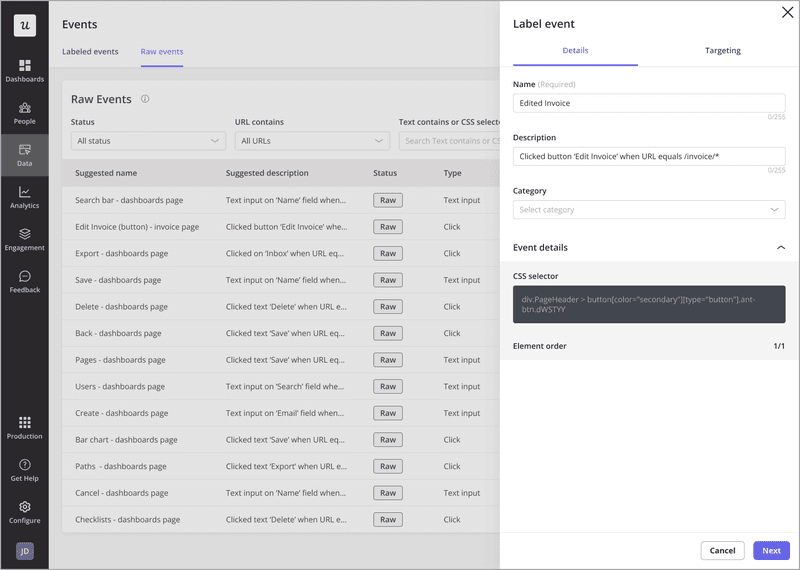
With an all-in-one product analytics platform like Userpilot, you can easily track custom events and feature engagements to gain deeper insights into engagement. Our autocapture feature takes things a step further by automatically tracking user actions like clicks, text input changes, and form submissions, eliminating the need to set up events manually.
Step 3: Assign a value to every event
Certain critical engagement events carry more weight than others. Assign a score to each based on its relative importance and impact on customer health.
Examples of high-value engagement events could include add-on purchases, subscription upgrades, and referrals. Recent events also typically carry more weight as they dictate how a user will perceive your product in the near future.
Start by listing down your events based on how customers engage with them. Then, assign a score of 1 to 10 to each, with 10 being a critical event.
Finally, calculate the total value of each event by multiplying the assigned score and the number of times the event occurred in a given period.
Total event value = Event score x Number of times the event occurred in the given period
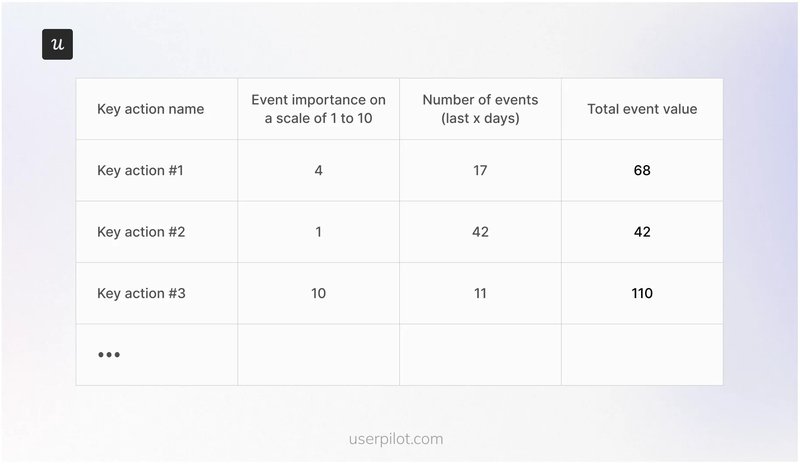
Step 4: Use this formula to calculate the customer engagement score
Once you’ve got a list of the total event values (calculated using step 3), you can find the CES for each user with the following formula:
CES = Total event value #1 + Total event value #2 + Total event value #3 + …
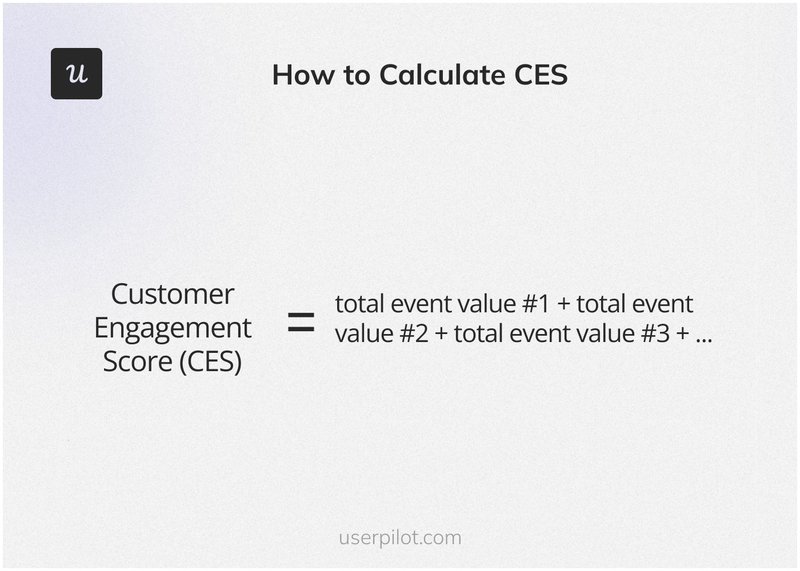
You can then group each user into various categories based on their engagement scores—much like how you’d do it in NPS surveys (more on this in the next section).
What is a “good” customer engagement score?
Ideally, you’d want to see every user with a CES of 100. But save a few instances, most users will have a score below 100. And that’s why anything above 70 is considered good. It indicates that the customer is very engaged and, therefore, satisfied with your product.
How do you interpret your CES?
- Negative CES: That’s a red flag screaming a high risk of churn.
- CES between 1 and 40: It shows very low levels of engagement and often comprises infrequent users who struggle to find value in your product. Implement interactive walkthroughs and checklists to handhold them through your platform.
- CES between 41 and 70: Users in this segment are somewhat engaged, but there’s room for improvement. Offer personalized guidance with hotspots and tooltips to highlight key features and nudge them to activation.
- CES between 71-100: These are highly engaged customers who actively use your product and find value in its features. Ask support agents to connect with them one-on-one and build lasting relationships. Maximize revenue from this segment by driving upsells and referrals.
- CES of/above 100: These are your power users, your brand champions! Collect feedback from them to improve your product.
4 Proven customer engagement strategies to improve your score
Measuring the customer engagement score isn’t enough. You need to analyze the data and act on it to enhance the customer experience.
Here’s how you can get started:
1. Create unexpected moments of delight
You open a SaaS app and see a banner mentioning that a feature you requested has been finally launched. That’d make you feel special and heard, right? In all likelihood, your attachment to the brand will grow.
That’s exactly why you should create moments of delight for users through personalization at every step of their journey. Send targeted messages on occasions like anniversaries and birthdays to nurture your relationship. Include a discount code or freebie to make it more memorable.
Likewise, create case studies featuring customer success stories and share them in your newsletter, website, and social media profiles. Another handy strategy is to communicate directly with the users. Use in-app messages and emails to congratulate them on achievements, such as performing a specific number of actions.
See how we announce the launch of new features (in this case, a dashboard) with an in-app modal. Note how the text in the modal speaks directly to the users and asks them for feedback too.
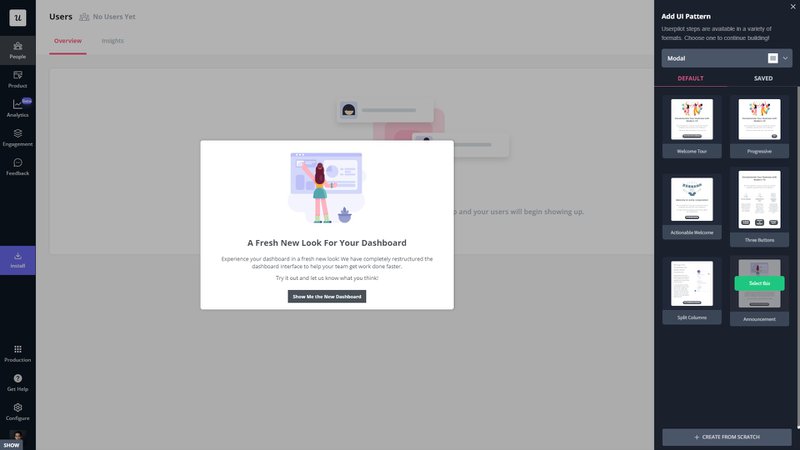
2. Develop a gamification strategy
Using your product should be something that users should look forward to. How do you make it happen when you’re building a B2B SaaS solution?
Deliver a fun and exciting experience with in-app gamification. For instance, you can leverage Userpilot to gamify the onboarding experience with checklists and progress bars that push users to complete tasks.
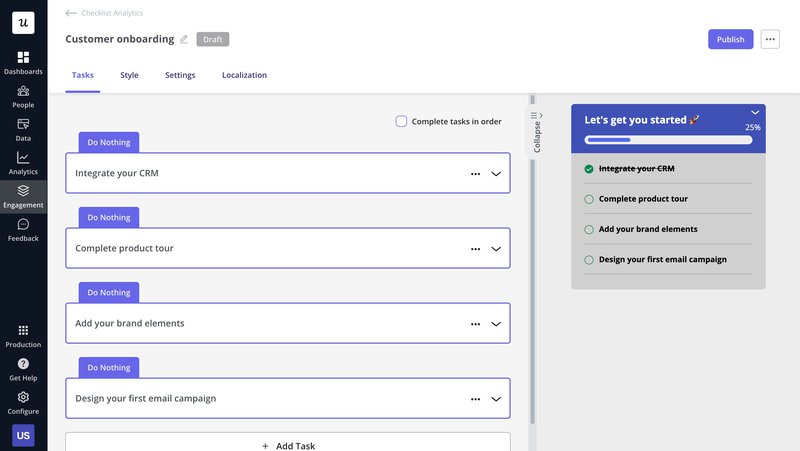
Other ways of creating a gamified experience include:
- Launching time-limited challenges that encourage users to try more features.
- Adding leaderboards to foster friendly competition among users. It motivates them to use your product more often.
- Presenting digital rewards like badges and stars when users complete key tasks, such as setting up their accounts or connecting to a CRM.
Take a cue from Groupize, a meetings management platform. They created and integrated G.G., their interactive assistant, with Userpilot’s knowledge base.

Users could summon it on-demand, and they’d have a virtual assistant at their service. The result? A significant difference in the number of support tickets and the types of queries. G.G. handled all the simpler questions.
3. Actively collect and implement customer feedback
To drive customer engagement, you need to build a product that meets customer needs and addresses their pain points. And for that, it’s essential to know how customers feel about your product.
The best way to gain these insights is to collect and act on customer feedback. Add a visible feedback button within your product or launch in-app surveys to understand user expectations and identify areas of improvement.
Userpilot lets you create non-intrusive feedback surveys to gather insights into customer loyalty, retention, and satisfaction. And to get them to pop up at the right time, you can use event-based triggers.
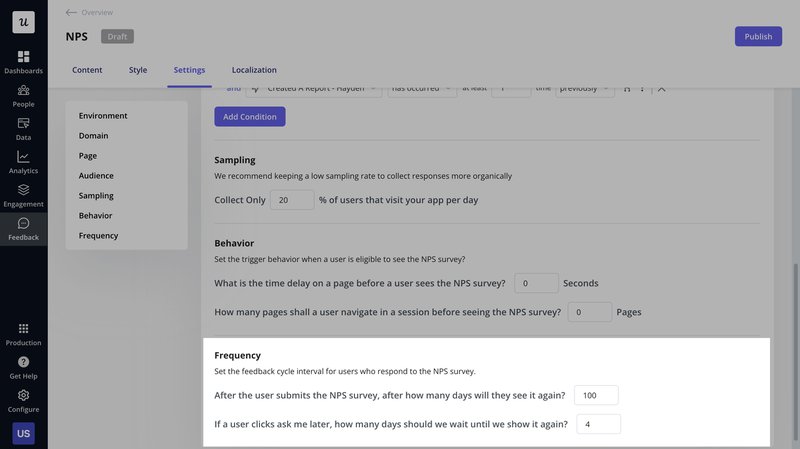
4. Optimize the customer experience with A/B testing
Use A/B testing to experiment with different onboarding flows, new feature announcements, and contextual tooltips. Identify the most effective variations and implement them across the user base to deliver an enhanced experience.
Conduct these tests regularly so that your product keeps up with changing user preferences.
Userpilot offers a variety of A/B tests, including controlled, head-to-head, and controlled multivariate tests. This way, you can test one, two, or multiple flows against a control group. Once the test concludes, it displays results in the form of bar charts to show which group won and by what percentage.

Track, iterate, and win with CES
The customer engagement score is a crucial metric that offers insights into customer satisfaction and loyalty.
Whether it’s delighting users with personalization or creating a fun experience with gamification, every step you take to improve CES ultimately leads to an enhanced product.
Ready to take customer engagement to the next level? Book a free demo of Userpilot and see how it can help you skyrocket CES with in-app onboarding, surveys, and more.



